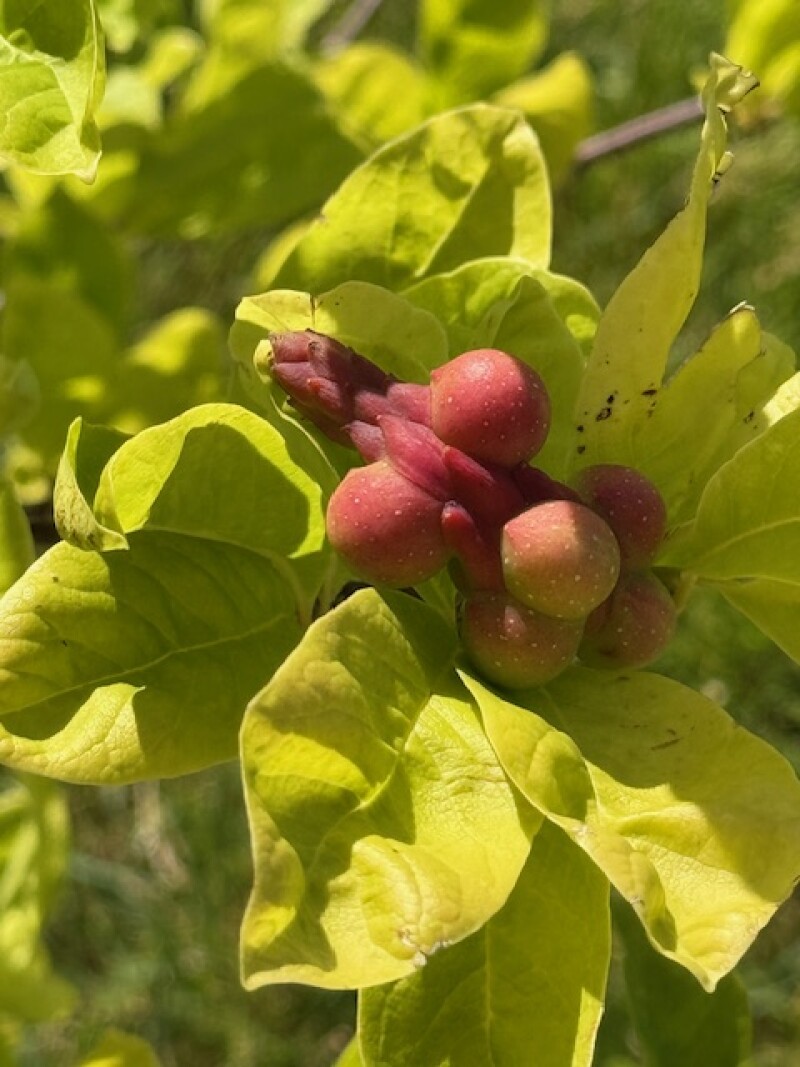Lifestyle
Explore the Beauty of Spring Welcome Magnolia and Pruning Tips

The Spring Welcome Magnolia is gaining attention for its stunning beauty and resilience in colder climates. Developed by North Dakota State University, this variety is designed specifically for the Upper Midwest, thriving in growing conditions typical of Zones 3 and 4. Its round, red seed pods add ornamental value during the fall and winter months, making it an appealing choice for gardeners looking to enhance their landscapes year-round.
Characteristics of the Spring Welcome Magnolia
Blooming in early spring, the Spring Welcome Magnolia showcases delicate pink buds that unfurl into pristine white flowers. This large shrub or small specimen tree can reach heights of up to 20 feet and can be cultivated with single or multiple trunks. Remarkably, it can withstand winter temperatures as low as -35 degrees Fahrenheit, making it a reliable option for Northern gardeners.
Gardeners interested in adding this resilient magnolia to their landscapes should visit local garden centers. It is advisable to inquire about its availability for the next planting season, as interest in this hardy variety continues to grow.
Pruning Tips for Home Gardeners
In another gardening query, a homeowner named Amy F. expressed concern about her golden currant bushes encroaching on a walkway due to summer growth. As winter approaches, she sought advice on whether to prune now or wait until spring.
Generally, the best practice is to wait until late winter or early spring to prune trees and shrubs. Doing so allows plant cells to activate and seal off any wounds, reducing the risk of damage from desiccation or disease. Nonetheless, in Amy’s case, pruning the currants now, as they enter dormancy, could prevent issues with snow accumulation and facilitate easier snow removal.
While municipal foresters often begin pruning as soon as trees are dormant, homeowners may find it beneficial to trim back overgrown plants when necessary. Pruning in the fall does not always lead to injury, but it is usually safer to wait unless immediate action is required.
Dividing Iris: A Practical Approach
Another gardening enthusiast, Amy L., faced the challenge of separating weeds from an old clump of iris. To tackle this issue effectively, she sought guidance on the best method for digging and dividing while minimizing weed contamination.
A seasoned gardener recommended a technique that involves submerging the root system in water after digging up the clump. This method loosens the soil, making it easier to remove unwanted weed roots and seeds. As the soil falls away, identifiable weed roots like quackgrass and dandelions can be separated from the iris roots, ensuring a cleaner replanting process.
For homeowners with gardening inquiries, Don Kinzler from NDSU Extension-Cass County is available to provide advice. Interested individuals can reach out via email, with the possibility that questions of broader interest may be published to benefit the gardening community.
As the gardening season transitions, understanding the unique needs of plants like the Spring Welcome Magnolia and knowing when and how to prune or divide can enhance the gardening experience and ensure vibrant landscapes for years to come.
-

 Lifestyle4 months ago
Lifestyle4 months agoLibraries Challenge Rising E-Book Costs Amid Growing Demand
-

 Sports3 months ago
Sports3 months agoTyreek Hill Responds to Tua Tagovailoa’s Comments on Team Dynamics
-

 Sports3 months ago
Sports3 months agoLiverpool Secures Agreement to Sign Young Striker Will Wright
-

 Lifestyle3 months ago
Lifestyle3 months agoSave Your Split Tomatoes: Expert Tips for Gardeners
-

 Lifestyle3 months ago
Lifestyle3 months agoPrincess Beatrice’s Daughter Athena Joins Siblings at London Parade
-

 World3 months ago
World3 months agoWinter Storms Lash New South Wales with Snow, Flood Risks
-

 Science4 months ago
Science4 months agoTrump Administration Moves to Repeal Key Climate Regulation
-

 Science3 months ago
Science3 months agoSan Francisco Hosts Unique Contest to Identify “Performative Males”
-

 Business4 months ago
Business4 months agoSoFi Technologies Shares Slip 2% Following Insider Stock Sale
-

 Science4 months ago
Science4 months agoNew Tool Reveals Link Between Horse Coat Condition and Parasites
-

 Sports4 months ago
Sports4 months agoElon Musk Sculpture Travels From Utah to Yosemite National Park
-

 Science4 months ago
Science4 months agoNew Study Confirms Humans Transported Stonehenge Bluestones









